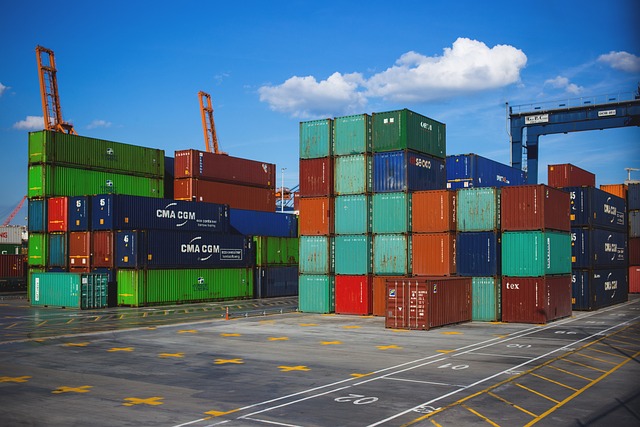6 Ways Shipping Logistics Software Development Can Cut Costs and Boost Efficiency

Strong 8k brings an ultra-HD IPTV experience to your living room and your pocket.
If you're in the shipping or logistics industry, you've likely faced problems like delivery delays, high fuel costs, human errors, and poor customer satisfaction. Have you ever wondered how top logistics companies stay ahead and keep everything running smoothly, even during high demand or supply chain disruptions?
The answer often lies in one smart decision—investing in shipping logistics software development. But how exactly can this technology help you save money and boost your operations?
In this article, we’ll explore 6 powerful ways logistics software can help you cut unnecessary costs, improve accuracy, and make your entire delivery process more efficient. Whether you're a startup logistics company or an enterprise-level operator, these insights can change how you handle shipping forever.
1. Real-Time Tracking Reduces Delivery Errors and Costs
One of the biggest reasons for failed or delayed deliveries is the lack of real-time tracking. Without knowing where your drivers or shipments are, you're operating in the dark. This often leads to customer complaints, loss of goods, and re-delivery costs.
With a custom logistics software solution, you can:
- Track fleet movements live on a dashboard.
- Alert customers with ETAs and delivery updates.
- Optimize routes to avoid traffic or weather delays.
The result? Lower fuel costs, happier customers, and no missed deliveries.
2. Automated Route Optimization Saves Time and Fuel
Shipping logistics software uses GPS data and traffic analytics to automatically create the fastest, most fuel-efficient delivery routes. Imagine sending 10 drivers out each day—what if each one saves 10% on fuel and 30 minutes of drive time?
Over a year, that’s thousands of dollars saved and a more productive delivery team.
This automation also removes manual decision-making, reducing room for human error and saving dispatcher time.
3. Smart Inventory Management Minimizes Wastage
Do you often run out of stock or overstock your inventory? Poor inventory control leads to missed orders, wasted warehouse space, and tied-up capital.
Shipping logistics software offers built-in inventory management that:
- Tracks stock in real-time.
- Predicts future demand based on trends.
- Alerts you before you run out or overstock.
That means fewer returns, more satisfied customers, and less money spent fixing stock issues.
4. Automated Paperwork Reduces Admin Overhead
Managing shipping documentation like bills of lading, customs paperwork, and invoices can take hours every day.
By automating documentation through logistics software, you:
- Save time and reduce clerical errors.
- Ensure compliance with international shipping standards.
- Keep all records securely in the cloud.
This helps your team focus on high-impact work instead of repetitive tasks, cutting down operational costs in the long run.
5. Predictive Analytics Help You Plan Smarter
Wouldn’t it be helpful to know peak demand periods, high-return zones, or delivery delays before they even happen?
Shipping logistics software powered by AI can do exactly that.
- With predictive analytics, you can:
- Plan staffing needs in advance.
- Identify which products or routes bring delays.
- Take proactive steps before small problems grow expensive.
Smart planning prevents surprises—and every surprise in logistics usually costs money.
6. Better Customer Experience = Higher Retention and Lower Costs
Acquiring a new customer is five times more expensive than keeping an existing one. So, improving your customer experience isn’t just about good service—it’s a cost-saving strategy.
Logistics software can help you:
- Provide real-time delivery updates.
- Offer flexible delivery slots.
- Enable instant support and easy returns.
When customers trust your delivery process, they stay longer, complain less, and spread the word. That saves marketing costs and increases revenue.
Final Thoughts: Is It Time to Digitize Your Logistics Operations?
So, let’s go back to the questions we started with—why are some shipping companies more efficient, fast, and reliable than others?
The answer is simple: they’re using the right technology.
Shipping logistics software development is no longer a luxury—it’s a must-have for businesses that want to survive in today’s fast-moving supply chain world. From cutting fuel and labor costs to improving customer experience, the benefits are massive.
Now is the time to shift from traditional, manual systems to smart, automated logistics software.
If you’re looking to grow, scale, and outperform your competitors, investing in logistics technology isn’t just a smart move—it’s the best one.
Are you ready to level up your shipping operations and cut down on costs for good?
FAQs on Shipping Logistics Software Development
Q1. What is shipping logistics software?
Shipping logistics software is a digital tool that helps companies manage delivery operations, including tracking, inventory, route planning, and documentation. It simplifies day-to-day tasks and improves efficiency.
Q2. How does logistics software reduce delivery costs?
It reduces fuel expenses through smart route optimization, automates paperwork to cut down admin time, and prevents delivery errors with real-time tracking—all of which lower overall costs.
Q3. Can shipping software work for small businesses too?
Yes, it can be customized for businesses of all sizes. Even small logistics providers benefit from automation, inventory control, and better customer communication.
Q4. What features should I look for in logistics software?
Key features include real-time tracking, route optimization, inventory management, document automation, predictive analytics, and customer notification systems.
Q5. Is logistics software secure for sensitive data?
Most modern solutions use cloud technology with end-to-end encryption, user authentication, and secure backups to ensure your business data is safe.
Q6. How long does it take to develop a custom logistics software?
Development time depends on your requirements. A basic version might take 2–3 months, while an advanced, enterprise-level solution may take 4–6 months or longer.
Q7. What’s the ROI of investing in logistics software?
Though initial costs vary, companies usually see ROI within months due to savings on fuel, labor, admin work, and improved delivery accuracy and customer retention.
Note: IndiBlogHub features both user-submitted and editorial content. We do not verify third-party contributions. Read our Disclaimer and Privacy Policyfor details.







